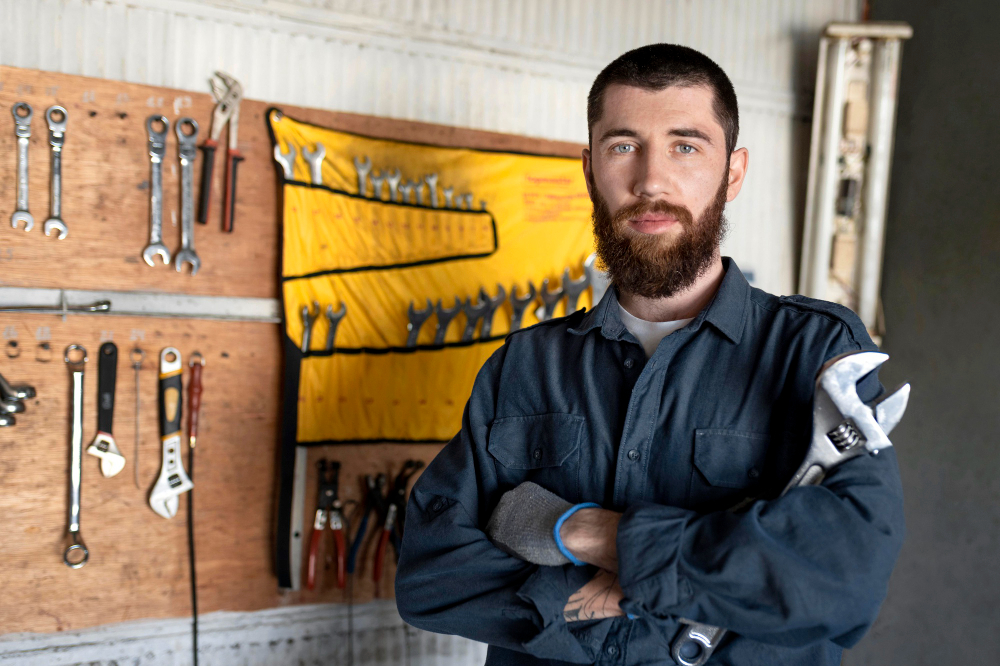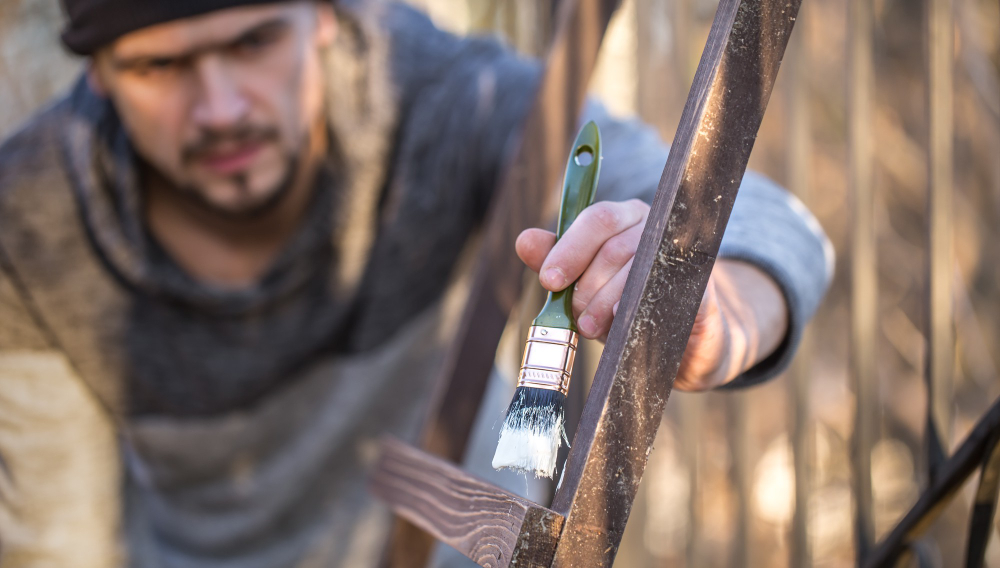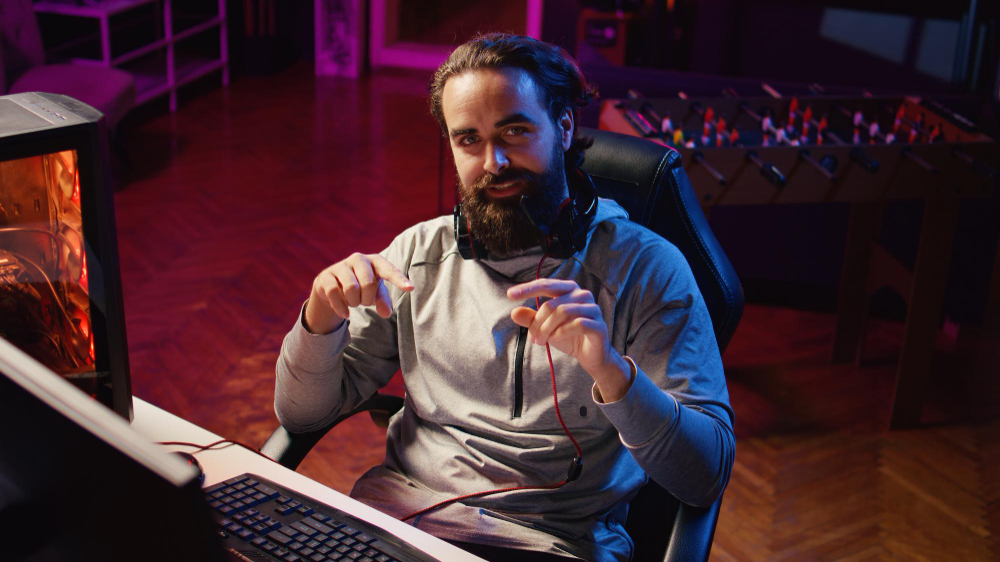Harnessing Imagination: Game Art Freelance Services
Table of Contents
- Overview of Game Art Freelance Services
- Types of Game Art Services
- The Importance of Quality Game Art
- Choosing the Right Game Art Freelancer
- Game Art Process and Workflow
- Conclusion
Overview of Game Art Freelance Services
In the world of digital gaming, visual elements play a pivotal role in creating immersive and engaging experiences for players. This is where Game Art Freelance Services step in. These services encompass a variety of creative and technical skills dedicated to enhancing the visual aesthetics and user experience of your game.
Freelance game artists are independent professionals who offer their expertise on a project basis. This provides developers with a flexible and often cost-effective solution, eliminating the need for a full-time in-house artist for smaller studios or short-term projects. The vast array of freelancers available ensures that, regardless of your specific needs or the genre of your game, there will be an artist suited to your project.
These artists contribute to a multitude of facets within a game's development process. From designing unique, captivating characters that players will identify with and creating immersive environments that pull players deeper into your world, to designing user interfaces that are both aesthetically pleasing and intuitive to navigate, freelance game artists are key players in bringing your vision to life. They also have the skills to create captivating concept art, establish the tone and visual style of the game, and potentially even create animations to make your game world truly dynamic.
Furthermore, freelance game artists typically have diverse portfolios showcasing their ability to adapt to different art styles, genres, and themes, which makes them versatile assets for any development team. They have usually honed their skills working on a range of different projects, which can bring a fresh perspective and innovative approach to your game.
In essence, Game Art Freelance Services offer a strategic way to inject creativity, skill, and immersive visuals into your game, captivating your target audience and setting your project apart in the competitive gaming industry.
Types of Game Art Services
Game Art Freelance Services cover a vast array of specialties, each bringing unique aspects to a game's aesthetic and gameplay experience. These services can be broadly categorized into the following types:
- Concept Art: Concept artists generate initial visual ideas and drafts that establish the look and feel of the game world. They create the blueprint for all other artistic elements to follow, defining the game's color palettes, mood, lighting, and architectural or environmental details.
- Character Design: This involves the creation of unique, compelling characters that resonate with the game's audience. From initial sketches to final digital renderings, character designers provide players with relatable or aspirational figures to inhabit the game world.
- Environment Design: Environment artists shape the settings and landscapes within the game. They craft detailed, immersive environments that enhance the game narrative, provide context for action, and interact with game mechanics.
- UI (User Interface) Design: UI designers create the interactive elements of the game that players use to navigate and control gameplay. Their work includes designing menus, buttons, on-screen displays, and other visual cues that are intuitive, aesthetically pleasing, and aligned with the game's overall art style.
- 3D Modeling: 3D modelers bring characters, props, and environments to life in three dimensions using various software. They create the assets that populate the game world, providing players with a visually compelling, interactive experience.
- Animation: Animators give movement to characters and game elements, making the game world dynamic and realistic. They work on everything from character actions to environmental effects, adding a layer of realism and engagement to the gaming experience.
- Texture Art: Texture artists create the surface details for 3D models, adding depth and realism. This could include skin for characters, grass for landscapes, or metal for weapons, each requiring detailed work to make game assets visually believable.
- VFX (Visual Effects): VFX artists create special effects and visual illusions for the game. This could include magic spells, explosions, weather effects, or other stylized elements that enhance the visual spectacle of the game.
Each type of Game Art Service plays an integral role in crafting a rich, engaging, and immersive game experience. They all work together to ensure that every visual aspect of your game is harmonious, contributing to a unified, compelling whole.
The Importance of Quality Game Art
The importance of quality game art in the gaming industry cannot be overstated. It is a critical factor that significantly influences a game's success and resonates with the audience on multiple levels. Here's how:
- Player Engagement: High-quality visuals are immediately appealing, drawing players in and making a strong first impression. Detailed, innovative, and visually appealing game art can captivate players, increasing their desire to engage with the game and explore its world.
- Immersion and Experience: Quality game art creates immersive environments and realistic character designs that allow players to lose themselves in the game world. It facilitates a deep emotional connection with the game and enhances the overall player experience.
- Narrative and Storytelling: Game art plays a crucial role in storytelling. It sets the mood, tone, and atmosphere of the game world, helps portray the personalities of characters, and can subtly guide players through the story progression.
- Uniqueness and Branding: Exceptional game art sets your game apart from the crowd in a highly competitive market. It establishes a unique visual identity for your game, making it instantly recognizable and memorable.
- Player Retention: A game with quality art is more likely to retain players. Consistently impressive visuals can encourage players to return to the game, enhancing player retention rates and ultimately contributing to the game's longevity.
- Feedback and Interaction: Good game art isn't just about pretty visuals. User interface (UI) design and visual effects (VFX) also fall under this umbrella, directly impacting how players interact with the game and receive feedback from it. Quality UI and VFX can dramatically improve gameplay, making it more intuitive, rewarding, and satisfying.
- Commercial Success: In the end, all the above points contribute to the game's commercial success. Quality game art can lead to better reviews, higher player engagement, increased word-of-mouth advertising, and ultimately, higher sales.
In conclusion, quality game art is a vital investment for any game developer. It's an essential element that enriches player experience, drives engagement, and plays a significant role in the commercial success of a game.
Choosing the Right Game Art Freelancer
Selecting the right Game Art Freelancer can significantly influence the success of your game project. Here are several key aspects to consider during the selection process:
- Relevant Expertise and Skills: The freelancer should possess the necessary skills and expertise required for your project. Examine their portfolio to gauge their proficiency in the specific game art services you need, such as character design, environment design, UI design, 3D modeling, or animation.
- Style Compatibility: Look for a freelancer whose artistic style aligns with the vision for your game. Even though skilled artists can adapt to different styles, it's often beneficial when their natural style matches your project's aesthetic.
- Portfolio Evaluation: A comprehensive portfolio showcasing a range of projects gives you a clear picture of the artist's versatility, creativity, and technical abilities. Look for examples that demonstrate complexity, attention to detail, and understanding of various art styles and themes.
- Communication Skills: Effective communication is crucial in any creative collaboration. The freelancer should be responsive, open to feedback, and capable of clearly articulating their ideas and processes.
- Understanding of Game Development: An artist with a good grasp of game development workflows and understanding of how art integrates with other game components can be a valuable asset. They can foresee potential design issues and make artwork that not only looks good but also works well within the game's mechanics and constraints.
- Test Project or Sample Work: If possible, consider starting with a small test project. This can help you evaluate not just the quality of their work, but also how well they adhere to deadlines, their ability to take feedback, and overall work ethic.
- Rates and Budget: Lastly, ensure that their rates align with your project's budget. Remember, the cheapest option is not always the best one. Consider the value they bring to your project and assess whether the cost corresponds with the quality and expertise they offer.
Choosing the right Game Art Freelancer is a vital decision that can affect the visual appeal and success of your game. Therefore, it's worth investing time in finding a professional who not only delivers high-quality work but also shares your vision and passion for the project.
Game Art Process and Workflow
The game art process and workflow involves multiple stages, each playing a vital role in creating captivating visual content for your game. Here is a typical workflow:
- Initial Consultation: The process begins with an initial consultation and brief where you communicate your vision, game concept, art style, target audience, and project timeline to the freelance artist. It's important to provide as much detail as possible to guide the artist's work.
- Research and Conceptualization: Based on your brief, the artist conducts further research and begins conceptualizing ideas. They may explore different art styles, color schemes, and designs that align with your vision.
- Concept Art Creation: The artist then starts creating concept art, which forms the visual blueprint for your game. This includes preliminary sketches and digital renderings of characters, environments, and key objects. Concept art allows you to visualize the game world and make adjustments before detailed artwork production begins.
- Feedback and Revisions: You review the concept art and provide feedback. The artist incorporates your feedback into their designs, and this process of revision continues until you're satisfied with the general look and feel of the game art.
- Detailed Artwork Production: Once the concept art is approved, the artist begins the detailed artwork production. This might include finalizing character designs, environment art, UI design, 3D modeling, animation, and other visual elements as per your project's requirements.
- Implementation: The completed artwork is then implemented into the game. This involves integrating the visual assets with the game's engine, mechanics, and narrative elements.
- Testing and Adjustments: After implementation, testing is crucial to ensure the artwork fits seamlessly within the game and doesn't cause any performance issues. Any necessary adjustments are made at this stage.
- Final Review and Approval: Once all the artwork is implemented and tested, you conduct a final review. If any further tweaks are needed, the artist will make these final adjustments.
- Delivery: Upon your approval, the final artwork is delivered, marking the end of the game art process.
The game art process can be complex, requiring close collaboration between you and the artist. Remember, the key to a successful game art project is effective communication, a clear vision, and mutual understanding of expectations and goals.
Conclusion
The gaming landscape today is more than just about mechanics and gameplay; it's a canvas where artistry meets interactivity, creating immersive worlds that captivate and enchant players. Recognizing this profound shift, investing in exemplary Game Art Freelance Services becomes not just a choice but a pivotal decision in the game development process. Such an investment serves as the bridge between a game's underlying code and the rich tapestry of visuals that define its aesthetic appeal.
When you opt for top-tier game art services, you're not merely hiring a freelancer; you're collaborating with a visionary. Someone who understands the intricate balance between art and function, ensuring that every design choice enhances the gameplay experience. This kind of collaboration has the potential to turn your game from a mere digital interaction into a living, breathing universe, replete with its own distinct ambiance, character, and emotion.
However, the true magic lies in the transformative power of art. With the right game artist on board, even the simplest game mechanics can be wrapped in a visually arresting narrative, ensnaring players and drawing them deeper into the story you wish to tell. This artistry can become the defining edge in a market teeming with competition, setting your game on a pedestal, making it both recognizable and memorable.
In essence, the world of gaming is a vast ocean, and while many ships sail its waters, only those with a distinct and vibrant flag catch the eye. By partnering with skilled game art freelancers, you're ensuring that your game is not just another ship but a flagship, leading the charge with its distinct visual identity. So, as you chart the course for your game's journey, remember that the right artistic touch can make all the difference, transforming your vision into an unforgettable odyssey for players everywhere.














